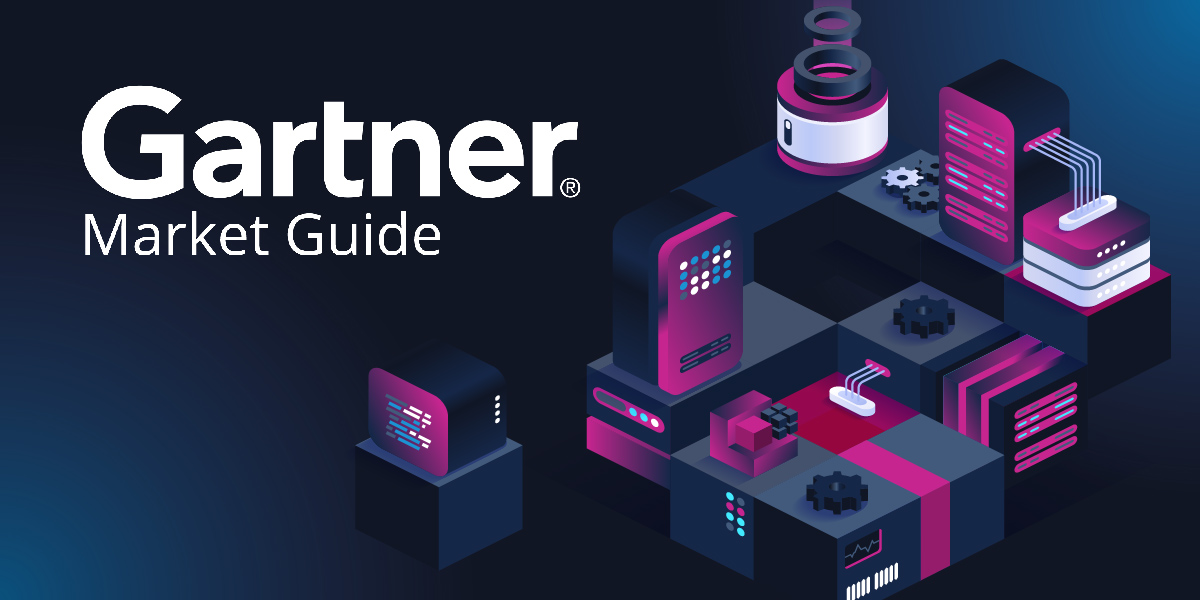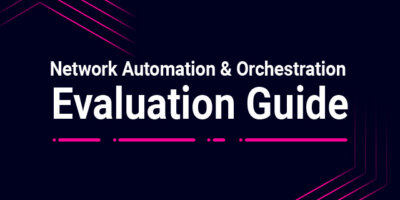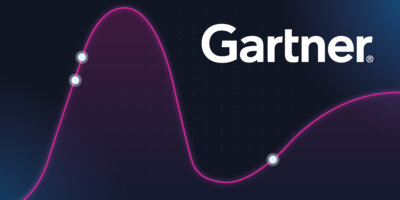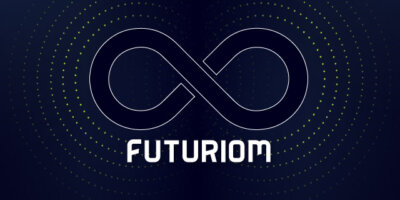There is a fundamental shift taking place in the network automation market.
For quite some time, network engineers have been building automations for network tasks, using open-source tools like Python and Ansible along with domain-specific tooling suited to their particular environments. But over time, an approach that relies on tools alone becomes unmanageable and will limit how quickly network teams can deliver infrastructure services to the business.
To support automation initiatives across expanding network and cloud infrastructure, the market and customers alike are now defining the separation of automation and orchestration in their strategies. As outlined by Gartner and other leading analysts, Automation focused tools enable network teams to build and execute tasks, while Orchestration platforms empower organizations to build and coordinate automations across domains. Orchestration is critical to provide consolidated self-serve networking and support a product-centric strategy for network services.
The new Gartner Market Guide for Network Automation Platforms highlights how this reality has given rise to a new shift, from automation of tasks with tools to orchestration of workflows with platforms. Gartner’s updated Market Guide represents a fundamental shift in how infrastructure, operations, and cloud leaders should think about improving and scaling their network automation efforts and why adopting a platform approach that helps connect and integrate scattered automation tooling and assets is a must.
Why a Platform Approach to Network Automation Is Transformative
Identifying and defining a clear difference between network automation tools and network automation platforms is a relatively new idea for the industry. Here’s how Gartner defines the differences:
Automation Tools:
- Focus on automating individual tasks to reduce manual effort and errors, typically used to automate simple, repetitive tasks.
- Include DIY/open-source tooling, primarily Python and Ansible.
- Include single-vendor solutions like SD-WAN controllers and data center fabric managers.
Automation Platforms:
- Focus on orchestrating the entire processes end-to-end by stitching together individual automations alongside automated tasks on other network and IT systems.
- Are designed to provide a common framework for different automation assets and technologies.
- Take the responsibility for publishing and sharing automations, implementing RBAC, accessing inventory, and more away from the engineer writing the automation, helping save time and ensure consistency.
- Accelerate the delivery of automated network services by removing friction that can exist in complex, large-scale, multi-vendor networks.
Unlike tools, network automation platforms:
- Are multi-vendor.
- Support multiple networking domains.
- Support both provisioning and Day 2 operations.
- Include orchestration and workflow capabilities.
- Offer a low-code UI.
- Support event-driven automation in response to externally generated events, such as tickets.
The goal of a platform approach is to help move away from siloed automation efforts and evolve to large-scale, end-to-end process orchestration — without disrupting the ways engineers already use automation tools today. The right platform enables automations to be run by those who need them, whoever and wherever they are, without creating additional security risks.
It’s not about replacing automation tooling; it’s about enhancing the way these technologies are used. Adopting the right platform can transform how an organization approaches automation and orchestration, driving value across today’s large, complex, global networks.
Must-Have Capabilities for Network Automation Platforms
The Gartner Market Guide report identifies several must-have capabilities for these comprehensive platforms. When evaluating your platform options, Gartner recommends you look for solutions that provide the ability to:
- Leverage your existing network automation investments by supporting existing network automation tools already in place (Ansible or Python, for example).
- Have turnkey, generally available, supported integration plugins with the relevant tools and vendors in the enterprise’s environment, such as ServiceNow, Microsoft Teams, Slack, VMware vCenter, Splunk or Kubernetes.
- Offer published, open, RESTful APIs, that expose more than 90% of functionality, to allow for integration with other tools and the export of data.
- Allow enterprises to create customized workflows applicable to multiple vendors in a simplified fashion, versus rigid out-of-the-box canned options.
- Treat public cloud services as a first-class citizen by automating networking services inside of public cloud providers.
By providing these capabilities, a platform can successfully bring your organization from scatter-shot automation to a standardized, efficient approach to orchestrating change processes end-to-end.
How Itential Meets the Mark
Based on our robust set of features and capabilities, the report identifies Itential as a representative vendor for the growing market of network automation platforms that can help organizations scale their network automation approach.
Itential’s Automation Platform is delivered as a service, providing a cloud-native offering with features such as:
- Automation Studio for building low-code, re-usable, and modular workflows for stitching together a diverse set of automations including Ansible Playbooks, Terraform plans, custom developed applications, and directly consumed API endpoints.
- Automation Gateway for federating and executing high-code automation assets including Ansible Modules, Roles, Playbooks, Terraform plans, all forms of scripting (Python, Bash, Pearl etc.) and libraries such as Netmiko and Nornir independently as a service or included within orchestration workflows.
- Configuration Manager for validation of configs through Golden Config definition and compliance/validation capabilities.
- Self-Service application that enables teams to define different triggers (APIs, Event Based, Manual Input Forms, Schedules) to cater to various consumption paradigms.
- Support for both fire-and-forget and stateful approach to drive lifecycle (Day 0, 1, 2) aspects of infrastructure and services being offered by network and cloud teams.
- Ecosystem Applications such as ServiceNow, GitHub Actions, and Salesforce enabling many teams to consume and request with self-service.
- Open API specification for all Itential applications to support consumption of capabilities via external tools like pipelines, portals, and more.
Itential’s comprehensive product portfolio enables enterprise teams to maximize ROI on existing investments and expand their approach to automation, evolving from silos to workflows and implementing automation across the entirety of their network infrastructure environments. We aim to help organizations make the evolution from tools to platforms, getting the most out of the automations they’ve already built and providing new options for end-to-end orchestration.
To test-drive our platform with a free trial, click here, or take an interactive product tour here. You can also schedule some time with our automation experts for a custom demo.
To access a complimentary copy of the full Gartner Market Guide for Network Automation Platforms, click here.





